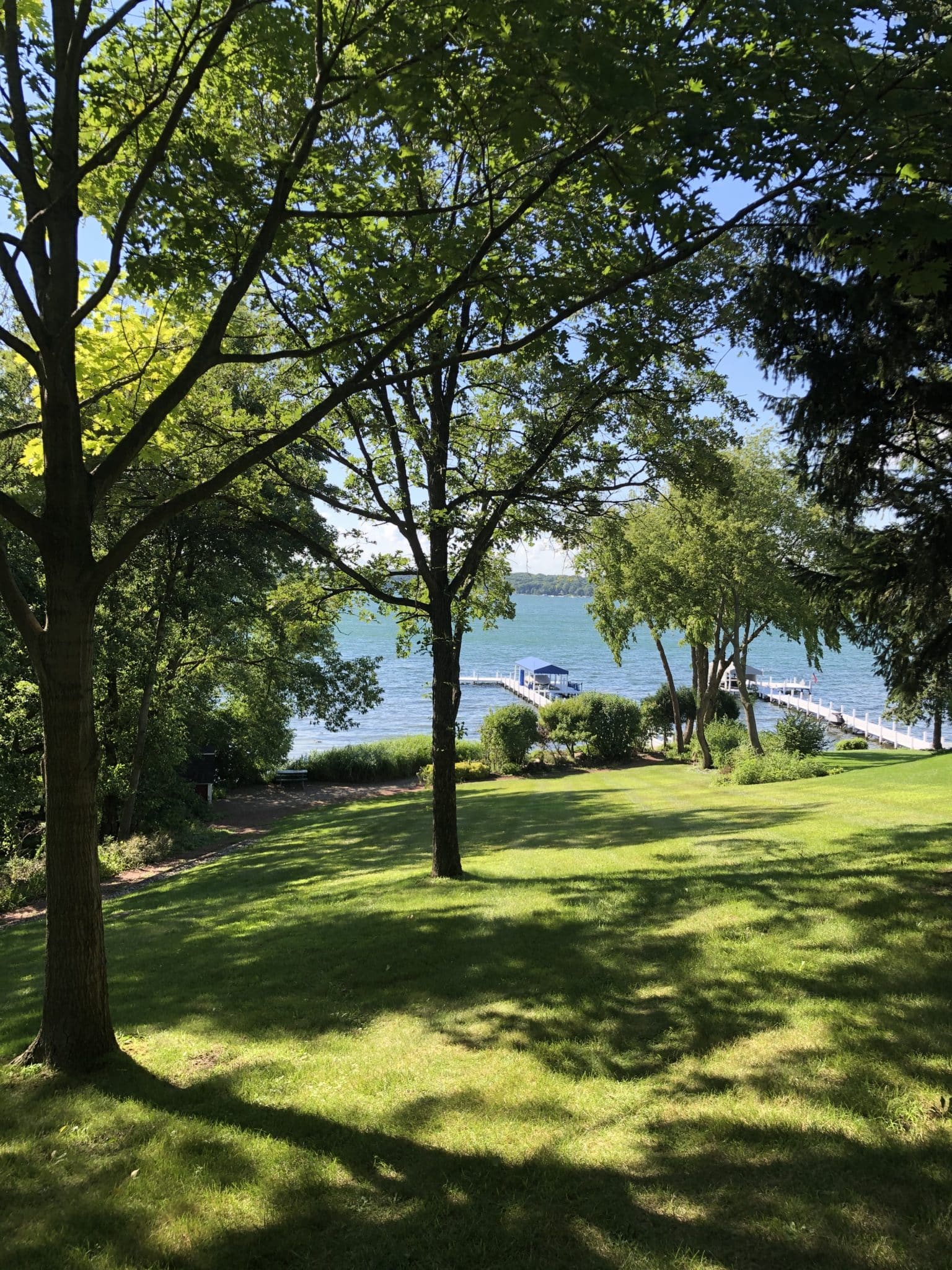The most common method for agents to market their knowledge finds them sending out postcards showing the sold properties in their geographic area. That’s it. That’s the big trick. It’s that way here and in Sandusky, Ohio and in Beverly Hills. In presenting the market this way, it could lead to some confusion as to who is selling what, which is the unspoken point if you’re not controlling the majority of the volume. Beyond that general confusion, there is some pricing and volume confusion, but that’s not the fault of any agent, rather it’s the fault of the way the MLS requests the sale information. How do you count lakefront homes? Well, it should be somewhat easy, and I suppose the MLS has made it that way. If a property has some private lakefront, then it’s lakefront. But the market views this differently. How can you treat a home that sits behind another home, even if that subject home has private frontage, as though it should be priced the same as the front home? You can’t, and that’s the issue. Further, is a Glenwood Springs front row home a true lakefront home? The market says it is, but how can we factor that home into our famed Price Per Front Foot equation if, as a point of fact, that home has no private frontage? This is the confusion, and this is why two different postcards you might receive in the mail could have two different totals for PPFF and annual volume. It’s likely that neither total is wrong, they’re just counting differently.
Let’s take a look at the YTD statistics for the lakefront market at Lake Geneva. There’s no doubt the theme this year has been a lack of inventory, and if that’s indeed the right theme, then we should expect to see two things. Higher prices and lower volume. After all, without inventory you cannot have volume. I know this and I didn’t even get a 100 on my economics exam this week, which my son just did, making him one of eight kids in a class of 433 to achieve a perfect score. Please contact me for internship opportunities. Sorry for the digression, I’m a proud father. Back to the lakefront. Low inventory means low volume and high prices. That’s the idea, anyway.
YTD 2020 there had been 15 single family lakefront sales. That’s true lakefronts, the ones that we can count with private frontage, not the ones that sit behind another house or in the South Shore Club or in Glenwood Springs, or anything with shared frontage. True lakefronts, that’s what we’re after. Of those 15, the average sales price was $3,945,266. Or was it? See, another flaw in our flawed MLS is that they require the agents to report the actual transfer price, rather than the contract price. Common practice at the lake (I’m not an attorney, so consult one if you’d like legal advice on real estate transfers) is to assign some amount of value to the personal property being sold with the property. If you’re buying a $5,000,000 house with an included pier and shore station and appliances and window treatments, it wouldn’t be a stretch to think that those items are worth $100,000. So we transfer the property at $4,900,000 and assign value of $100,000 to the personal property. The MLS wants to see that sale at $4,900,000 in their system, but we know the true value of the property was $5,000,000. That’s another reason the sales numbers can appear different in various publications or portals. What’s the right value of a sale? The actual contract number, not the transfer number. If only the MLS was smart enough to ask me for advice on how to run their dwindling business.
Those 15 sales transferred 1807 feet of private frontage, for an average price per front foot (PPFF) of $32,749. Consider the year end metric for 2012, the year that represented the bottom of this last market cycle, was $23,110. Are values up less than 50% since 2012? No, they aren’t, which is why the PPFF statistic is so woefully inadequate. The 2020 YTD total is skewed, as the PPFF tends to be, by a sale on Black Point with 464 feet of frontage, which closed at a mere $14,547 per front foot. Why did it close for that “cheap” price? Because the harbor interrupted the lawn and the market didn’t like the silly harbor. That’s why, along with the fact that value compression is meaningful and cannot be ignored.
Now let’s look at 2021 YTD, with our inventory starved market, to see how it has performed in light of 2020. The MLS shows 21 lakefront sales YTD, even though I know there are at least five more that have transacted off market and never made it to the MLS (ask me how I know…) We’ll only use the 21 MLS sales to come to a total closed volume of $97,133,000. That’s more than a 60% increase in lakefront closed volume compared to 2020. Those properties measure 2186 feet along the lakefront, representing a 2021 YTD PPFF of $44,434, or a 35% increase over 2020. That’s impressive, no doubt, for a year when the general consensus is we have nothing here to sell. Has the lakefront market appreciated 35% over the past year? That’s the tricky bit here, and the answer is definitively, not exactly. In some cases, yes. But in others, no. How can you tell the difference between houses that are worth that average market increase and the houses that are not? That answer is super easy. Just work with me.

